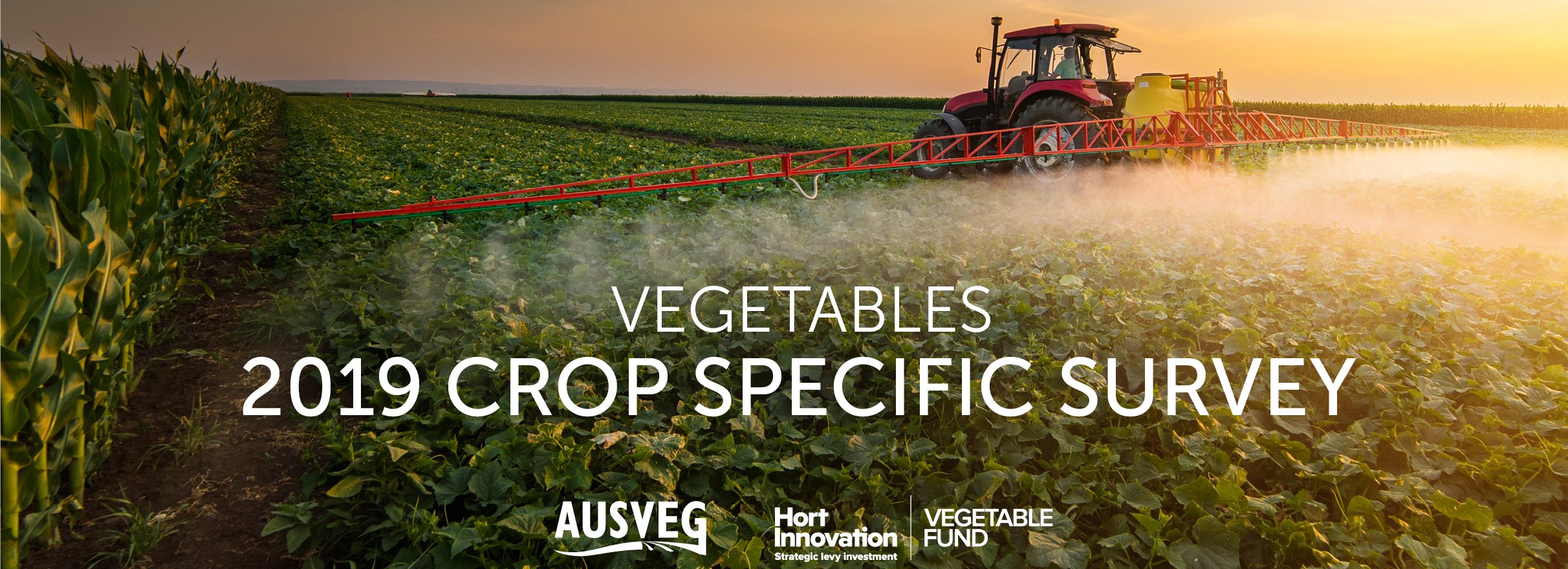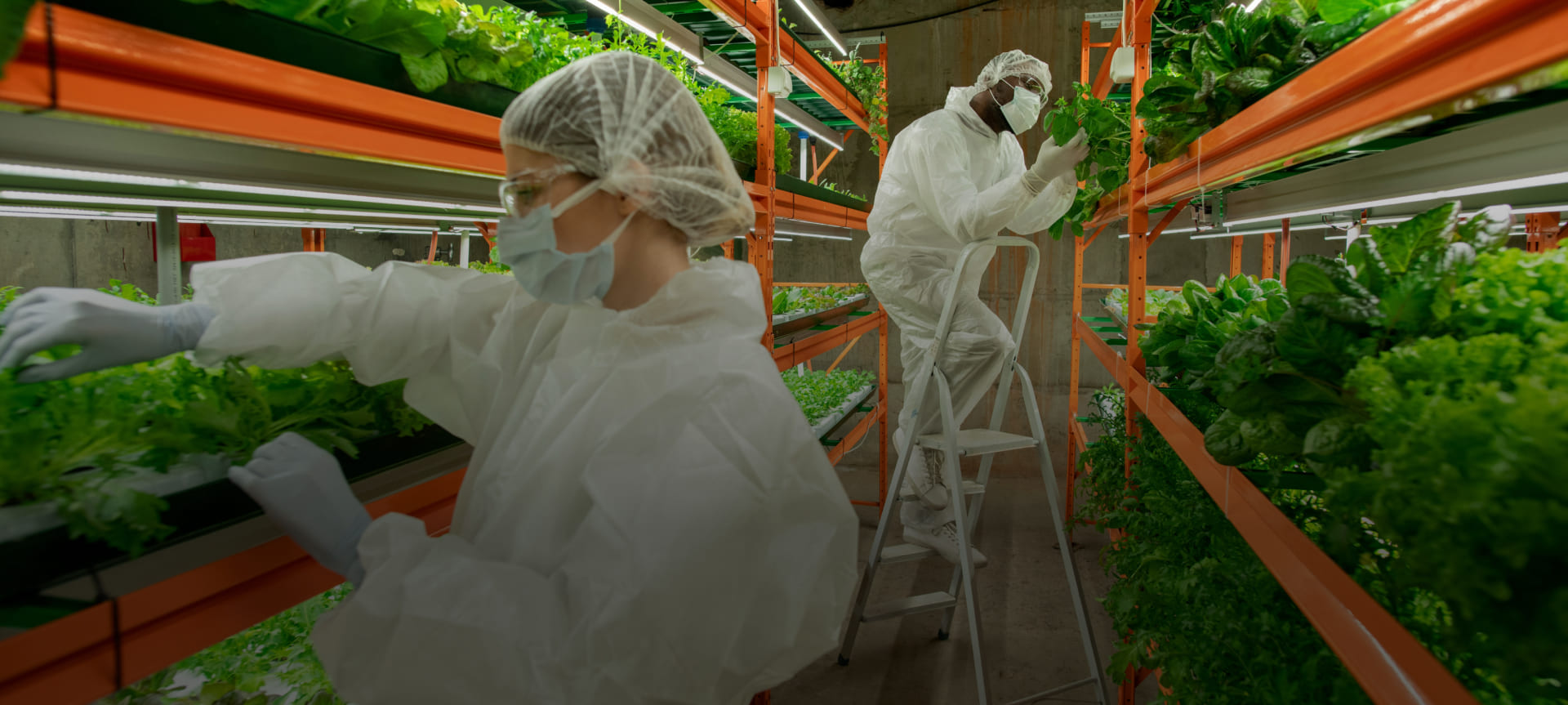Information on Strategic Agrichemical Review Process (SARPs)
Vegetable type
Links to each of the key vegetable groups in Australia, including a range of information on vegetables categorised under each group, plant diseases and disorders, key pests, management, and control measures, and related technical resources for additional reference.
Asian leafy vegetables
Vegetables originating in the East and Southeast Asian countries are called Asian vegetables. Many Asian vegetables are from the Brassica and Cucurbit families and therefore may be impacted by key insect pests and diseases of Brassica and Cucurbit vegetables. Asian vegetables include the Asian leafy brassicas (e.g. buk choy, choy sum), melons (e.g. hairy melon), and luffas.
Pests, diseases and disorders
A diagnostic guide and key reference for pests, diseases, and disorders affecting vegetable crops in Australia. The hyperlinked topics provide further detailed information about the pests, diseases, disorders – their identification, types, management, and source of information and related tools.
Vertebrate pests
Vertebrate pests include birds, mammals, or reptiles that cause damage to agricultural crops. A number of introduced animals – including rabbits, feral cats, foxes, house mice, wild dogs, Indian Myna, and pigs – have established large and widespread populations in Australia and are pests to crops and livestock.
Slugs and Snails
Slugs and snails are major pests in most horticultural crops. They are invertebrate pests. Both of them are similar in structure and biology, except that snails have an external, spiral shell which is absent in slugs. Once established, the pest can survive in the soil between crops unless the lifecycle is broken.
Nematodes
Nematodes, or ‘eelworms’, are small, non-segmented worms that live in soil, which cannot be seen with the naked eye. They are only 50 microns in diameter and about 1 mm long or less. They feed on fungi, bacteria, and other soil organisms, together with plant cells. In some cases, they also allow fungal rots to enter that destroy the roots. While most nematode species have a beneficial role in the soil, some species are pests and impact agricultural production.
Weeds
Weeds are invasive plants with the potential to reduce agricultural productivity, displace native species and contribute to land and water degradation. They have significant economic, environmental, and social impacts. Weeds compete with agricultural crops for plant nutrients and water and are one of the most significant sources of pests and disease.
Plant diseases and disorders
Different types of plant diseases and disorders include:
Fungal diseases
Fungi constitute the largest number of plant pathogens and are responsible for a range of serious plant diseases. Most vegetable diseases are caused by fungi. They damage plants by killing cells and/or causing plant stress. Sources of fungal infections are infected seed, soil, crop debris, nearby crops and weeds. Fungi are spread by wind and water splash, and through the movement of contaminated soil, animals, workers, machinery, tools, seedlings and other plant material. They enter plants through natural openings such as stomata and through wounds caused by pruning, harvesting, hail, insects, other diseases, and mechanical damage.
Bacterial diseases
Pathogenic bacteria cause many serious diseases of vegetables. They do not penetrate directly into plant tissue but need to enter through wounds or natural plant openings. Wounds can result from damage by insects, other pathogens, and tools during operations such as pruning and picking. Bacteria only become active and cause problems when factors are conducive for them to multiply. They are able to multiply quickly. Some factors conducive to infection include: high humidity; crowding; poor air circulation; plant stress caused by over-watering, under-watering, or irregular watering; poor soil health; and deficient or excess nutrients.
Viral diseases
Viruses cause major damage to many Australian vegetable crops. They are immobile and are usually transmitted from one plant to another by a living organism called a vector or carrier. The most significant vectors of plant viruses include aphids, whiteflies, thrips, and leafhoppers, which have piercing sucking mouthparts that allow the insects to access and feed on the contents of the plant cells. Viruses can also be transmitted by other insects, mites, nematodes, fungi, infected pollen or vegetative propagating material, contact between plants, and infected or contaminated seeds.
Nutrient and physiological disorders
Nutrient disorders are caused by a lack of plant nutrients, or the presence of nutrients at levels toxic to the plant. They affect the functioning of the plant system. When suffering from nutrient or physiological disorders, the plant exhibits disease-like symptoms; therefore nutrient disorders are sometimes mistaken for a disease. Nutrient disorders may result in a reduction in yield.
Integrated Pest Management (IPM)
An overview of IPM, key IPM principles, management components of IPM, IPM resources, and source of technical information and related tools.
Tools to help make decisions
Information
Health
Pesticide Guides
VG16060 - Agrichemical Pest Management Needs and Priorities
To establish direct grower interaction and ensure that the agrichemical needs of the vegetable sector are accurately recorded and understood, AUSVEG commenced coordination of the project Vegetable Agrichemical Pest Management Needs and Priorities (VG16060), a strategic levy investment under the Hort Innovation Vegetable Fund.
The project’s objective were to coordinate vegetable industry agrichemical pest needs by identifying and prioritising potential gaps through the implementation of an effective prioritisation process for the industry.
This project was coordinated by Patrick Arratia. A component of Patrick’s role was to capture direct input from growers relating to individual crop commodities. This was achieved on a regional basis in conjunction with the existing Strategic Agrichemical Review Process (SARP) and regional Industry Development Officers (IDOs).
Priority agrichemical gaps identified in this three-year project informed industry actions at the annual AgChem Collaborative Forum, assisted in updating industry SARPs and identified potential solutions to address these gaps.
The successful rollout of this project resulted in an effective agrichemical prioritisation process for the vegetable industry through a high level of industry engagement and input, which will direct R&D funding for crop protection purposes.
This project has been funded by Hort Innovation, using the Vegetable research and development levy and contributions from the Australian Government. Hort Innovation is the grower-owned, not-for-profit research and development corporation for Australian horticulture.
AUSVEG VG16060 Agrichemical Pest Management Needs and Priorities – Quarterly Industry Updates
Past AUSVEG Project Coordinator for Agrichemical Pest Management Needs and Priorities, Patrick Arratia, released quarterly industry updates. These updates discussed the work being undertaken as part of the strategic levy investment: Vegetable Agrichemical Pest Management Needs and Priorities (VG16060). These updates include a list of past workshops that were coordinated to engage and consult with industry members about their pest priorities, as well as a summary of the on the ground work Patrick undertook around the country to discuss regional pest and disease issues with growers and agronomists.
For more information on this project, or to discuss your agrichemical pest management needs and priorities, contact AUSVEG at science@ausveg.com.au or by phone at 03 9882 0277.
Crop Specific Pest Surveys
 |
||
|---|---|---|
| LAST CHANCE!! 2019 Online Crop Specific Pest Surveys will be closing down in 3 stages, therefore we encourage growers and agronomists to take the opportunity to utilise this platform to express pest issues of concern. | ||
Closed on the 26 July 2019 |
Closed on the
26 October 2019
|
Surveys Close
28 February 2020
|
Media Releases
Hort Innovation projects renew important permits and enable new label registrations
A number of different projects have been funded by Hort Innovation to improve agrichemical access for growers by renewing important minor use permits and generating data to support new label registrations.
These projects are enabling the extension of over 20 minor use permits and generating data to support more than a dozen new label registrations for a wide range of vegetables over the coming years to help you manage your pest and disease issues. Some of these projects are also generating data to support other sectors of horticulture.
For a full breakdown of these projects and the permits being supported by these levy investments, you can read Hort Innovation’s March 2018 update on projects covering vegetable Minor Use permits and label registrations.
Summary of regulatory issues and chemical reviews
There are a wide range of chemical reviews and other regulatory concerns that affect the Australian vegetable industry, as well as the broader horticulture industry.
If you’re interested in a summary covering the key issues and concerns in this space, both in Australia and overseas, take a look at Hort Innovation’s latest agrichemical update.
This update covers a number of important issues affecting our industry, including:
- Regulatory reform around off-label use harmonisation in Australia, including a framework in which a grower of a minor crop could apply a pesticide off-label without the need for regulatory approval.
- New registrations and label extensions in recent months, including insecticides and fungicides for leafy vegetables, brassicas, fruiting vegetables and cucurbits
- International reviews of chemicals.
Integrated Weed Management (IWM)
Integrated weed management (IWM) is about combining a series of small management changes to produce a big result. Continually using only one or two methods of weed control, such as herbicides or tillage, can apply evolutionary pressure that encourages the growth of weeds resistant to those methods.
IWM doesn’t require a drastic change in management, but together these integrated practices could add up to a profound difference in the weed burden that growers deal with from year to year.
A strategic approach to weed management for the Australian vegetable industry (VG15070) sought to measure and cost-out these types of integrated strategies, with a focus on high priority weeds.
LOTE resources
Case studies
Priority weed management guides
Disclaimer: Please note that the information provided on the crop protection pages have been compiled from the outputs of levy-funded projects and State Government Departments of Primary Industries/Agriculture. Also note that the content provided is general in nature and does not cover all pests and diseases. Growers are encouraged to refer to the related technical tools and seek expert assistance in the identification and management of pests and diseases.


